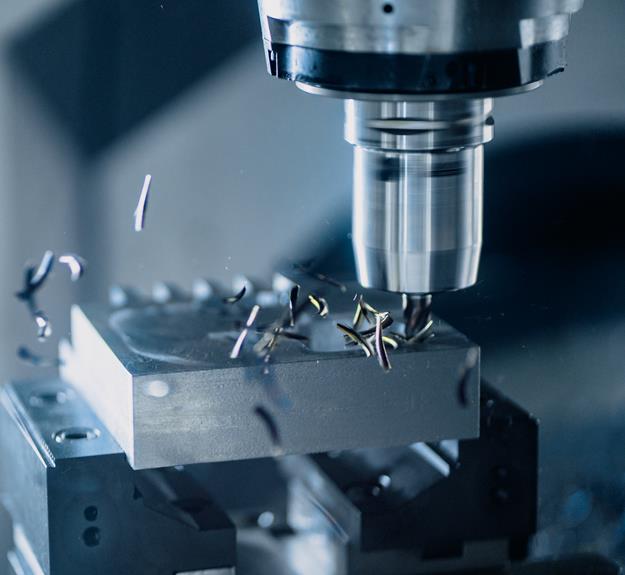3D Printing in the Automotive Industry: Innovating Mobility Solutions
With the rapid advancements in technology, the automotive industry has embraced 3D printing as a means to revolutionize mobility solutions. As of 2021, 3D printing has accounted for a staggering 12% increase in the production of automotive parts, allowing for greater customization, enhanced efficiency, and accelerated innovation.
This article explores the extensive impact of 3D printing on the automotive industry, from customized car parts to eco-friendly solutions, shaping the future of mobility and revolutionizing the way we envision transportation.
Key Takeaways
- 3D printing revolutionizes vehicle design and manufacturing, allowing for the creation of complex geometries and lightweight components.
- On-demand manufacturing reduces inventory costs and streamlines supply chains, while also enabling the printing of spare parts for improved customer satisfaction.
- Sustainable manufacturing methods in 3D printing reduce waste and use only necessary materials, addressing concerns over carbon emissions and waste generation.
- Integration of 3D printed parts in the automotive industry aligns with advancements in technology, improves fuel efficiency, and reduces carbon emissions.
The Evolution of 3D Printing in the Automotive Industry
The evolution of 3D printing in the automotive industry has revolutionized the way vehicles are designed and manufactured. Also known as additive manufacturing, 3D printing has found numerous applications in the automotive industry, leading to increased efficiency, cost savings, and enhanced design capabilities.
One of the key advantages of 3D printing in the automotive industry is the ability to create complex geometries that were previously impossible with traditional manufacturing methods. This has opened up new possibilities for lightweighting and optimization, as components can now be designed with intricate internal structures, reducing weight while maintaining strength and durability. Furthermore, 3D printing allows for rapid prototyping and iteration, enabling faster design cycles and reducing time to market.
Additive manufacturing is also transforming the production process by enabling on-demand manufacturing. With 3D printing, automotive manufacturers can produce parts as and when needed, reducing inventory costs and streamlining supply chains. This has significant implications for the aftermarket industry, as spare parts can be printed on demand, eliminating the need for large warehouses and improving customer satisfaction.
Transitioning into the next section, the ability to customize mobility is another significant advantage of 3D printing in the automotive industry. With the ability to easily create custom parts, vehicles can be tailored to individual needs and preferences, enhancing user experience and personalization.
Customizing Mobility: 3D Printed Parts in Cars
As the automotive industry continues to embrace 3D printing technology, one of the key benefits is the ability to customize mobility solutions through the creation of 3D printed parts in cars. This enables enhanced car performance, as manufacturers can design and produce parts that are specifically tailored to meet the unique requirements of each vehicle.
Additionally, 3D printing offers sustainable manufacturing methods, as it reduces waste by only using the necessary amount of materials and allows for the creation of complex geometries that were previously impossible with traditional manufacturing techniques.
Enhanced Car Performance
How can 3D printed parts in cars contribute to enhanced car performance and customized mobility solutions? The application of 3D printing in automotive manufacturing has opened up new possibilities for improving car performance. By utilizing this technology, automotive manufacturers can design and produce lightweight and complex parts that were previously difficult or impossible to manufacture using traditional methods. These 3D printed parts can be customized to fit specific performance requirements, resulting in improved aerodynamics, reduced weight, and enhanced overall vehicle performance. Additionally, the flexibility of 3D printing allows for rapid prototyping and iterative design, enabling automotive engineers to quickly test and implement performance-enhancing solutions. By integrating 3D printed parts, the automotive industry can push the boundaries of what is possible in terms of car performance and deliver customized mobility solutions. This innovative approach aligns with the growing demand for liberation and advancement in automotive technology.
| 3D Printing in Automotive | Enhanced Car Performance | Customized Mobility Solutions |
|---|---|---|
| Lightweight parts | Improved aerodynamics | Personalized design |
| Complex designs | Reduced weight | Enhanced performance |
| Rapid prototyping | Iterative design | Customized solutions |
| Design flexibility | Advanced technology | Innovation-driven approach |
| Performance optimization | Pushing boundaries | Advancement in technology |
This focus on enhanced car performance through 3D printed parts seamlessly transitions into the next section, which discusses sustainable manufacturing methods.
Sustainable Manufacturing Methods
Significantly, sustainable manufacturing methods are revolutionizing the automotive industry by incorporating 3D printed parts, allowing for customized mobility and reducing environmental impact. This shift towards sustainable manufacturing practices is driven by the need to address the growing concerns over carbon emissions and waste generation in the automotive sector.
Here are two key ways in which sustainable manufacturing methods are transforming the industry:
- Reduced Material Waste: 3D printing enables manufacturers to produce parts with a high level of precision, minimizing material waste. Traditional manufacturing processes often result in significant material wastage due to the need for subtractive manufacturing techniques. With 3D printing, only the required amount of material is used, leading to more sustainable production.
- Lightweight Design: 3D printing allows for the creation of complex geometries and lightweight parts, resulting in vehicles that are more fuel-efficient. By reducing the weight of car components, manufacturers can enhance the overall energy efficiency of vehicles, leading to reduced fuel consumption and lower carbon emissions.
By adopting sustainable manufacturing methods and incorporating 3D printed parts, the automotive industry is not only customizing mobility solutions but also making significant strides towards a more sustainable future.
In the subsequent section, we will explore how 3D printing technology is revolutionizing tooling in the automotive industry.
Revolutionizing Tooling With 3D Printing Technology
The integration of 3D printing technology in the automotive industry has revolutionized tooling processes, offering faster production times and cost-effective solutions.
With 3D printing, tooling can be produced more efficiently, reducing the time and expenses associated with traditional manufacturing methods.
Additionally, the design flexibility provided by 3D printing enables the creation of complex and customized tooling that can optimize production efficiency and improve overall performance.
Faster Production Processes
With the integration of 3D printing technology, automotive manufacturers are able to streamline their production processes and achieve faster turnaround times for tooling. This revolutionary technology offers several advantages that contribute to faster production processes in the automotive industry:
- Reduction in lead times: 3D printing allows manufacturers to quickly produce custom tooling components on-demand, eliminating the need for lengthy traditional manufacturing processes.
- Rapid prototyping: By utilizing 3D printing technology, automotive manufacturers can rapidly develop and test new prototypes, reducing the time required to bring new designs to production.
- Improved efficiency: 3D printing enables the creation of complex and lightweight tooling structures, resulting in enhanced efficiency and reduced material waste.
- Enhanced customization: The ability to easily modify and customize tooling components with 3D printing technology allows for greater flexibility in adapting to specific production requirements.
Cost-Effective Tooling Solutions
By providing a cost-effective alternative to traditional tooling methods, 3D printing technology revolutionizes the automotive industry's approach to creating essential production tools. With the ability to rapidly prototype and manufacture custom tools, 3D printing eliminates the need for expensive and time-consuming tooling processes. This not only reduces costs but also allows for greater design flexibility and faster turnaround times.
To better understand the impact of 3D printing on tooling solutions, consider the following table:
| Traditional Tooling | 3D Printing |
|---|---|
| Expensive | Cost-effective |
| Time-consuming | Rapid prototyping |
| Limited design options | Greater design flexibility |
| Long production lead times | Faster turnaround times |
As the table demonstrates, 3D printing technology offers significant advantages over traditional tooling methods. It enables the automotive industry to innovate and adapt more quickly, ultimately leading to improved efficiency and productivity.
Transitioning to the next section, improved design flexibility is another key benefit of 3D printing in the automotive industry.
Improved Design Flexibility
Improved design flexibility is a game-changer for the automotive industry, as 3D printing technology revolutionizes the way tooling is approached and executed. With the ability to create complex geometries and intricate designs, 3D printing offers a level of design freedom that was previously unimaginable. This flexibility allows automotive manufacturers to optimize their designs for performance, efficiency, and aesthetics.
The benefits of improved design flexibility in the automotive industry include:
- Enhanced customization: 3D printing enables the production of unique and personalized components, allowing customers to tailor their vehicles to their specific preferences.
- Lightweighting: By optimizing designs and removing excess material, 3D printing helps reduce the weight of automotive parts, leading to improved fuel efficiency and performance.
Accelerating Innovation: 3D Printed Prototypes in Automotive Design
The use of 3D printed prototypes has become an essential tool in the automotive design process. With the advancements in additive manufacturing technology, automotive manufacturers are now able to accelerate innovation and streamline their design and development processes. 3D printed prototypes offer numerous benefits that traditional prototyping methods cannot match.
One of the key advantages of using 3D printed prototypes in automotive design is the ability to quickly iterate and test multiple design concepts. This allows designers and engineers to explore various iterations and make necessary modifications without the need for costly and time-consuming tooling changes.
Moreover, 3D printed prototypes enable automotive manufacturers to reduce the time and cost associated with producing physical prototypes. By using 3D printing technology, designers can turn their digital designs into physical prototypes within hours, compared to weeks or even months with traditional methods. This significantly speeds up the overall design and development process, allowing for faster innovation and time to market.
Another benefit of 3D printed prototypes is the freedom it provides in creating complex geometries and intricate designs. Traditional manufacturing methods often have limitations when it comes to producing intricate shapes, but 3D printing allows for the creation of highly detailed and complex parts with ease.
To better understand the advantages of 3D printed prototypes in automotive design, let's take a look at the following table:
| Advantages of 3D Printed Prototypes in Automotive Design |
|---|
| Quick Iteration and Testing of Design Concepts |
| Reduced Time and Cost for Physical Prototyping |
| Freedom in Creating Complex Geometries and Intricate Designs |
| Improved Collaboration and Communication |
| Enhanced Design Validation and Validation |
Enhancing Efficiency: 3D Printing in Automotive Manufacturing
3D printing technology, along with its numerous advantages, has significantly improved efficiency in automotive manufacturing. This innovative technology has revolutionized the way cars are designed, developed, and produced, leading to increased productivity, cost savings, and faster time to market.
Here are some key ways in which 3D printing enhances efficiency in the automotive manufacturing process:
- Streamlined Supply Chain:
- With 3D printing, manufacturers can produce parts and components on-demand, eliminating the need for maintaining large inventories and minimizing lead times.
- This decentralized production model reduces transportation costs and eliminates the risks associated with supply chain disruptions, ultimately improving overall efficiency.
- Complex Design Optimization:
- 3D printing enables the creation of complex geometries and intricate designs that were previously impossible with traditional manufacturing methods.
- By optimizing designs for specific functions and requirements, automotive manufacturers can achieve lightweight structures, improved performance, and reduced material waste, resulting in enhanced efficiency.
Furthermore, 3D printing allows for rapid prototyping and iteration, enabling manufacturers to quickly test and validate new designs before mass production. This iterative design process helps identify and address potential issues early on, reducing the time and cost associated with design revisions.
The Impact of 3D Printing on Supply Chain Management in the Automotive Industry
By revolutionizing the way automotive parts and components are manufactured and distributed, 3D printing has transformed supply chain management in the industry.
Traditionally, the automotive supply chain involved complex processes, including sourcing raw materials, manufacturing, assembly, storage, and distribution. However, with the advent of 3D printing, these processes have been streamlined, leading to significant improvements in efficiency and cost-effectiveness.
One of the key benefits of 3D printing in supply chain management is the ability to produce parts on-demand. This eliminates the need for large inventories and reduces the risk of obsolescence. With 3D printing, automotive manufacturers can now produce parts when and where they are needed, minimizing lead times and reducing transportation costs. This also enables companies to respond quickly to changes in customer demand and market trends.
Furthermore, 3D printing allows for the production of complex and customized parts that were previously difficult or expensive to manufacture using traditional methods. This opens up new possibilities for design innovation and product differentiation in the automotive industry. Manufacturers can now create unique components tailored to specific customer requirements, enhancing the overall quality and performance of vehicles.
In addition, 3D printing enables the consolidation of the supply chain by reducing the number of suppliers and intermediaries involved in the production process. This simplification leads to faster decision-making, reduced communication overhead, and improved collaboration between designers, engineers, and suppliers. As a result, the overall supply chain becomes more agile and responsive, enabling companies to quickly adapt to changing market conditions.
Exploring Sustainability: 3D Printing and Eco-Friendly Automotive Solutions
As 3D printing continues to advance, it presents a unique opportunity for the automotive industry to explore sustainable and eco-friendly solutions for mobility. With the ability to create complex shapes and reduce material waste, 3D printing allows for the production of lightweight components that can enhance fuel efficiency and reduce carbon emissions.
Here are two key ways in which 3D printing is contributing to the development of eco-friendly automotive solutions:
- Lightweighting: By using 3D printing to manufacture parts, automakers can optimize the design and reduce weight without compromising strength. This lightweighting approach not only improves fuel efficiency but also extends the range of electric vehicles, reducing their environmental impact.
- Material Recycling: 3D printing enables the use of recycled materials, such as plastic and metal powders, to create new components. This reduces the reliance on virgin materials and minimizes waste. Additionally, 3D printing allows for on-demand production, eliminating the need for large storage of spare parts and reducing inventory waste.
Shaping the Future of Mobility: 3D Printing and Autonomous Vehicles
The integration of 3D printing and autonomous vehicles is revolutionizing the future of mobility by enhancing safety and efficiency in transportation systems. As autonomous vehicles become more prevalent, the demand for customized parts and components is on the rise. This is where 3D printing plays a crucial role.
With 3D printing, manufacturers can produce complex and intricate parts that are specifically designed for autonomous vehicles, improving their performance and functionality. One of the key advantages of 3D printing in the context of autonomous vehicles is the ability to produce lightweight yet strong parts. By using advanced materials such as carbon fiber composites, 3D printing enables the creation of components that are not only durable but also significantly lighter than traditional manufacturing methods. This reduces the overall weight of the vehicle, leading to improved energy efficiency and increased range.
Furthermore, 3D printing allows for rapid prototyping and iteration, which is essential in the development of autonomous vehicles. It enables manufacturers to quickly test and refine designs, accelerating the innovation cycle. This ultimately leads to faster deployment of autonomous vehicles on the road.
In addition to the production of parts, 3D printing also plays a role in the development of sensors and other technology used in autonomous vehicles. By leveraging 3D printing, manufacturers can create intricate sensor housings and mounting brackets, ensuring precise placement and optimal performance.
Frequently Asked Questions
How Does 3D Printing Technology Work in the Automotive Industry?
3D printing technology in the automotive industry involves using additive manufacturing techniques to create vehicle components. It enables the production of complex parts with high precision, customization options, and reduced waste. This technology enhances efficiency and innovation in the mobility solutions sector.
What Are Some Examples of Customized 3D Printed Parts Used in Cars?
Some examples of customized 3D printed parts used in cars include interior components such as dashboard trims, door handles, and cup holders, as well as exterior parts like grilles, spoilers, and side mirrors.
How Does 3D Printing Revolutionize Tooling Processes in the Automotive Industry?
3D printing revolutionizes tooling processes in the automotive industry by enabling the production of complex and customized components with reduced lead times and costs. This technology offers greater design flexibility and allows for rapid prototyping, improving overall efficiency and innovation in the manufacturing process.
What Role Does 3D Printed Prototypes Play in Automotive Design and Innovation?
3D printed prototypes play a crucial role in automotive design and innovation by allowing engineers to quickly and cost-effectively test and refine their designs. This iterative process helps to identify and address any potential issues before full-scale production, leading to improved product quality and reduced time to market.
How Does 3D Printing Enhance Efficiency in Automotive Manufacturing Processes?
3D printing enhances efficiency in automotive manufacturing processes by enabling rapid prototyping, reducing material waste, and allowing for complex designs. It also streamlines supply chains, reduces lead times, and facilitates customization, ultimately improving overall productivity and cost-effectiveness.
Conclusion
In conclusion, 3D printing has revolutionized the automotive industry, offering endless possibilities for customization, innovation, and sustainability.
Like a well-oiled machine, this technology has seamlessly integrated into every aspect of the automotive sector, from designing prototypes to manufacturing parts and even optimizing supply chain management.
As the automotive industry continues to evolve, 3D printing will play a crucial role in shaping the future of mobility, paving the way for eco-friendly solutions and autonomous vehicles.
With 3D printing, the automotive industry has truly accelerated into a new era of innovation and efficiency.









